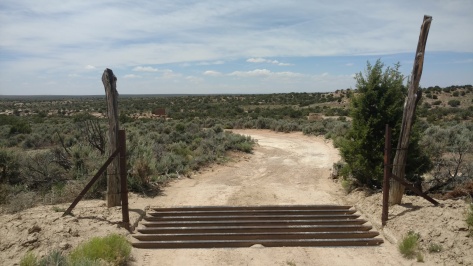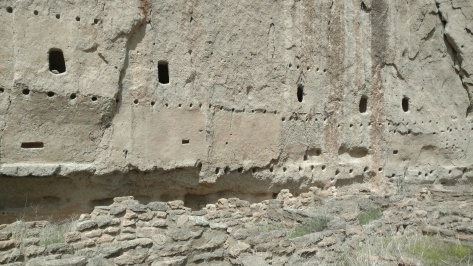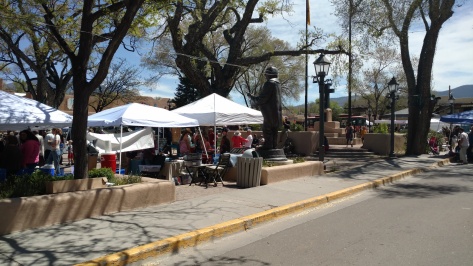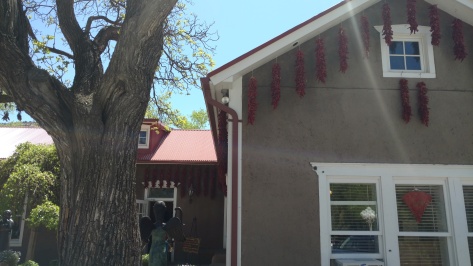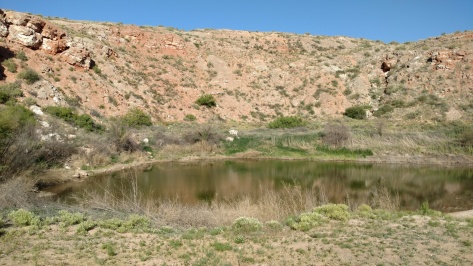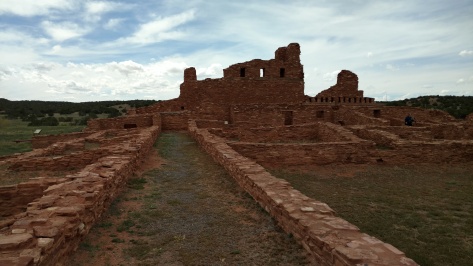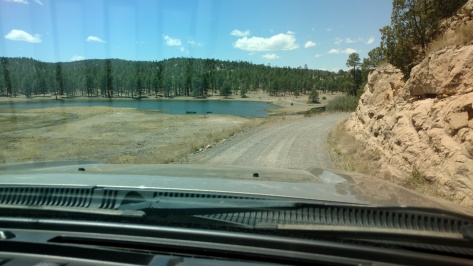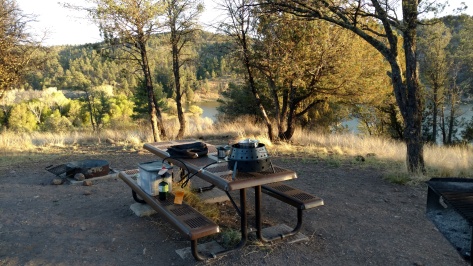Pam and I dropped south out of Utah, through Monument Valley to meet up with Lou and Nancy at a place neither of us had been to before, Navajo National Monument. It’s located about 20 miles west of Kayenta, AZ, within the Navajo Nation.
Our view from the campsite was spectacular.

There were a couple of hikes you could do on the rim of the canyons. One was to a beautiful view up one of the canyons.

The other hike was to a view of the Betatakin ancestral Pueblo ruins tucked into the face of the cliff. The alcove was approximately 400 feet high, 300 feet across and 150 feet deep to give it some perspective.

They have guided hikes down into the canyon with an up-close tour of the ruins, but the first tour of the year started two days after we were there. Therefore, we decided to leave for a couple of days and return and do the hike.
We headed south along the Arizona – New Mexico border to Canyon de Chelly National Monument. This is also a beautiful sandstone canyon. Pam and I have been there many times, but it was the first time for Lou and Nancy. We camped outside the canyon in Cottonwood campground. We had camped there years ago when our boys were much smaller and the cottonwoods were just planted and not providing much shade. Now the cottonwood trees are huge and the campground is a beautifully shaded area. Another couple, Anthony and Astrid, and their dog Digby joined us at the campsite after finishing up the close-out of Overland Expo.

We took the drive along the south rim and stopped at all of the overlooks.

The last overlook is at Spider Rock, a beautiful column of rock that has been the subject of thousands of pictures.

Many Navajo families still live in the canyon. The last time Pam and I were there we took both our Moms and hired a Navajo guide to drive us into the canyon. He grew up in the canyon and told us many stories of life in the canyon.
In the 1860s, the US Army, led by Kit Carson, killed or captured many Navajos in the canyon. The captured Navajos were taken to Fort Sumner, NM, over 300 miles away, on what is now known as the Long Walk. Many died on the walk and in captivity before being released and allowed to return to the canyon.
The only hike you can do into the canyon without a guide is to the White House ruins. It was a pretty hike down and back up through the sandstone canyon.

All six of us then returned to Navajo National Monument for the first guided hike of the year down to the Betatakin ruins. The ruins are in one of the many canyons that are visible from the hike. There is a longer hike to the Keet Seel ruins that we’ll have to go back and do sometime in the future. It’s not a guided hike but there is a ranger at the ruins when you make the 8 mile trek up another canyon.

The ruins are one of the most intact ruins in the southwest. Many of the wooden ceilings are still in place. There are a few rock sections of the alcove that have shed over the centuries to wipe out sections of the ruins, but most are still there. The place was occupied from 1250 to 1300 before they left and went south to the Hopi Mesas. Pictographs of several of the Hopi clans are still present today.

The valley is lush and a different eco system than the rim when looking out from the ruins. The valley was filled with oak and aspen trees and not the juniper trees that dominate the rim.

The hike was beautiful.

However, as with all hikes into a canyon there is always the issue of getting back up and out. A section of the hike reminded us of South Kaibab at the Grand Canyon, but it was just a short section.

We drove home on the holiday weekend and the forest south of Flagstaff looked green and healthy. Small cities of campers were everywhere in the woods for the long weekend.

Pam and I need to restock and then it’s off for the summer to the Rockies.








